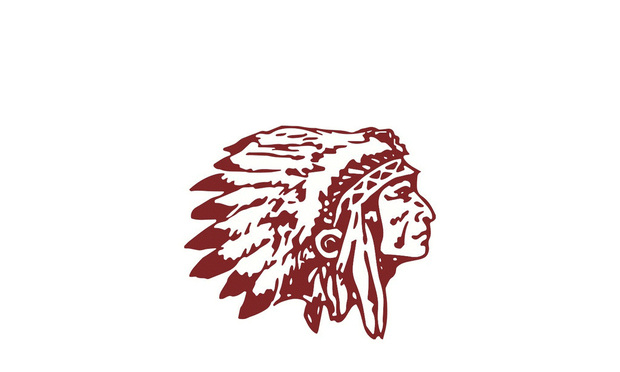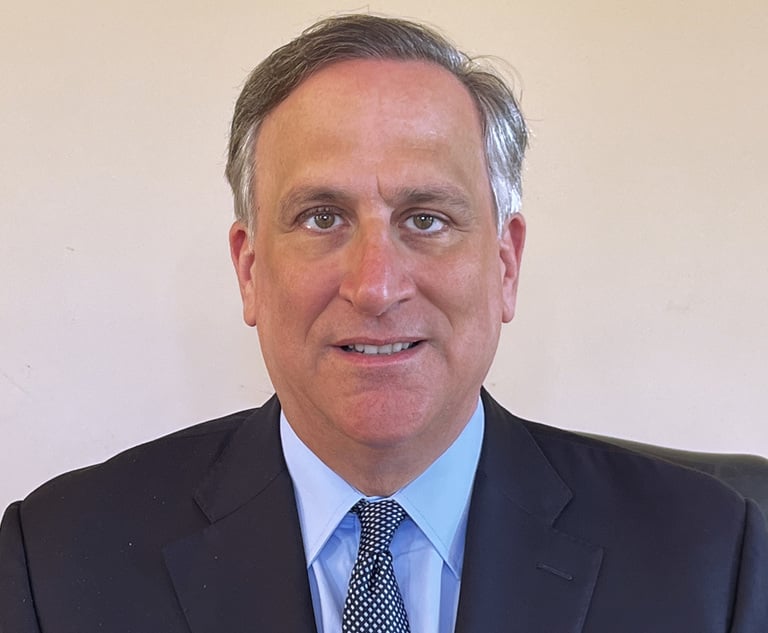The Time Has Come To Get Rid of Offensive Mascots
Turning any other disadvantaged racial minority into a team mascot would clearly be offensive. American Indians are no different.
March 12, 2020 at 09:14 AM
4 minute read
 Logo for the Killingly Redmen in Connecticut.
Logo for the Killingly Redmen in Connecticut.
Watching the fans of the Kansas City "Chiefs," tomahawk-chopping and wearing red-face and imitation feathered headdresses during last month's Super Bowl, one might not have realized Indian team names and mascots have been on the decline.
Since the 1960s, about two thirds of schools—including universities from Stanford to the University of Massachusetts, and high schools in West Hartford and Manchester, Connecticut— have retired them. Maine now prohibits American Indian team names and mascots for all its schools, and Oregon prohibits them without consent and consultation with the tribes of the area. In the midst of this welcome development, the town of Killingly's school board recently went backwards, reinstating the "Redmen" team name and mascot after the student body overwhelmingly voted to change it to the Red Hawks.
Advocates for the mascot argue that it honors the Native people it represents, but a little perspective undermines this argument. Can you imagine a team called the "Yellowmen" with a stereotypically Asian mascot? Or a "Blackmen" team with a stereotypically African mascot? How about the "Hispanics," represented by a mascot in a sombrero and serape? Turning any other disadvantaged racial minority into a team would clearly be offensive. Indians are no different.
One might also consider the perspective of tribal citizens of this area. The Mashantucket Pequot Tribe has condemned the mascot, and a representative of the Nipmuc Tribe—the Native people that first owned the territory where Killingly sits—told the school board the mascot was actually dishonoring. Nipmuc Tribal Councilmember Eric Gould stated that the feathered headdress on the Redmen image "is regalia worn in prayer, in ceremonies . . . It doesn't belong on a football helmet. . . . On behalf of the Nipmuc Nation, no thanks."
One could also take the perspective of experts that study the issue. Psychologist Stephanie Fryberg, for example, found that after being primed with images of either the cartoonish Chief Wahoo or the Disney-fied Pocahontas, Native students tested lower on measures of self-esteem, respect for their own communities and ambition for themselves. As Native youth experience some of the highest suicide rates of any group, undermining self-esteem can be deadly. Relying on this and other research, the American Psychological Association called for the immediate repeal of all Indian mascots in 2005. The APA found that such mascots not only harm Native self-image but also undermined "the educational experience of all communities—especially those who have little or no contact with indigenous peoples."
Or, one could consider the position of those involved in setting national educational law and policy. In 2001, the U.S. Commission on Civil Rights called for the end of use of Indian team names and mascots, finding they could create a "racially hostile educational environment," a violation of Title VI of the Civil Rights Act of 1964. State civil rights commissions in Michigan, Nebraska, and many others have joined this call.
Similarly, in 2005 the National College Athletic Association banned use of Indian team names and mascots in championship play without consent and consultation with local tribes. At the time, 19 schools were in violation of the policy. Since then, 14 have dropped their references to Indians, and five others have received consent from local tribes after making their Indian imagery more respectful.
Finally, one could simply take the perspective of the Killingly students and staff themselves. After years of debate, the Redmen issue arose during community discussions in response to reports that African American students had been bullied, called racist names, and even in one instance been pelted with fruit and other objects. Last October, 80% of Killingly students voted to replace the Redmen mascot with the Red Hawks. Teachers and staff now worry that the Redmen mascot makes it harder to recruit and retain talented and diverse faculty and staff.
In the face of all of these perspectives, proponents of the team name could see only their own perspective, voting in January to reverse the change to the Red Hawks. In response, this spring the Connecticut Legislature will consider sanctioning such mascots in Killingly and at the 18 other school districts that still use them. Although First Amendment issues always arise in such debates, the legislature has significant leeway in determining appropriate messaging at public secondary and elementary schools. Whatever happens in the legislature, we hope and trust that principles of cultural inclusion and respect will triumph in Killingly, as they are across the country.
This content has been archived. It is available through our partners, LexisNexis® and Bloomberg Law.
To view this content, please continue to their sites.
Not a Lexis Subscriber?
Subscribe Now
Not a Bloomberg Law Subscriber?
Subscribe Now
NOT FOR REPRINT
© 2025 ALM Global, LLC, All Rights Reserved. Request academic re-use from www.copyright.com. All other uses, submit a request to [email protected]. For more information visit Asset & Logo Licensing.
You Might Like
View All
ADVANCE Act Offers Conn. Opportunity to Enhance Carbon-Free Energy and Improve Reliability With Advanced Nuclear Technologies

Trending Stories
Who Got The Work
J. Brugh Lower of Gibbons has entered an appearance for industrial equipment supplier Devco Corporation in a pending trademark infringement lawsuit. The suit, accusing the defendant of selling knock-off Graco products, was filed Dec. 18 in New Jersey District Court by Rivkin Radler on behalf of Graco Inc. and Graco Minnesota. The case, assigned to U.S. District Judge Zahid N. Quraishi, is 3:24-cv-11294, Graco Inc. et al v. Devco Corporation.
Who Got The Work
Rebecca Maller-Stein and Kent A. Yalowitz of Arnold & Porter Kaye Scholer have entered their appearances for Hanaco Venture Capital and its executives, Lior Prosor and David Frankel, in a pending securities lawsuit. The action, filed on Dec. 24 in New York Southern District Court by Zell, Aron & Co. on behalf of Goldeneye Advisors, accuses the defendants of negligently and fraudulently managing the plaintiff's $1 million investment. The case, assigned to U.S. District Judge Vernon S. Broderick, is 1:24-cv-09918, Goldeneye Advisors, LLC v. Hanaco Venture Capital, Ltd. et al.
Who Got The Work
Attorneys from A&O Shearman has stepped in as defense counsel for Toronto-Dominion Bank and other defendants in a pending securities class action. The suit, filed Dec. 11 in New York Southern District Court by Bleichmar Fonti & Auld, accuses the defendants of concealing the bank's 'pervasive' deficiencies in regards to its compliance with the Bank Secrecy Act and the quality of its anti-money laundering controls. The case, assigned to U.S. District Judge Arun Subramanian, is 1:24-cv-09445, Gonzalez v. The Toronto-Dominion Bank et al.
Who Got The Work
Crown Castle International, a Pennsylvania company providing shared communications infrastructure, has turned to Luke D. Wolf of Gordon Rees Scully Mansukhani to fend off a pending breach-of-contract lawsuit. The court action, filed Nov. 25 in Michigan Eastern District Court by Hooper Hathaway PC on behalf of The Town Residences LLC, accuses Crown Castle of failing to transfer approximately $30,000 in utility payments from T-Mobile in breach of a roof-top lease and assignment agreement. The case, assigned to U.S. District Judge Susan K. Declercq, is 2:24-cv-13131, The Town Residences LLC v. T-Mobile US, Inc. et al.
Who Got The Work
Wilfred P. Coronato and Daniel M. Schwartz of McCarter & English have stepped in as defense counsel to Electrolux Home Products Inc. in a pending product liability lawsuit. The court action, filed Nov. 26 in New York Eastern District Court by Poulos Lopiccolo PC and Nagel Rice LLP on behalf of David Stern, alleges that the defendant's refrigerators’ drawers and shelving repeatedly break and fall apart within months after purchase. The case, assigned to U.S. District Judge Joan M. Azrack, is 2:24-cv-08204, Stern v. Electrolux Home Products, Inc.
Featured Firms
Law Offices of Gary Martin Hays & Associates, P.C.
(470) 294-1674
Law Offices of Mark E. Salomone
(857) 444-6468
Smith & Hassler
(713) 739-1250








